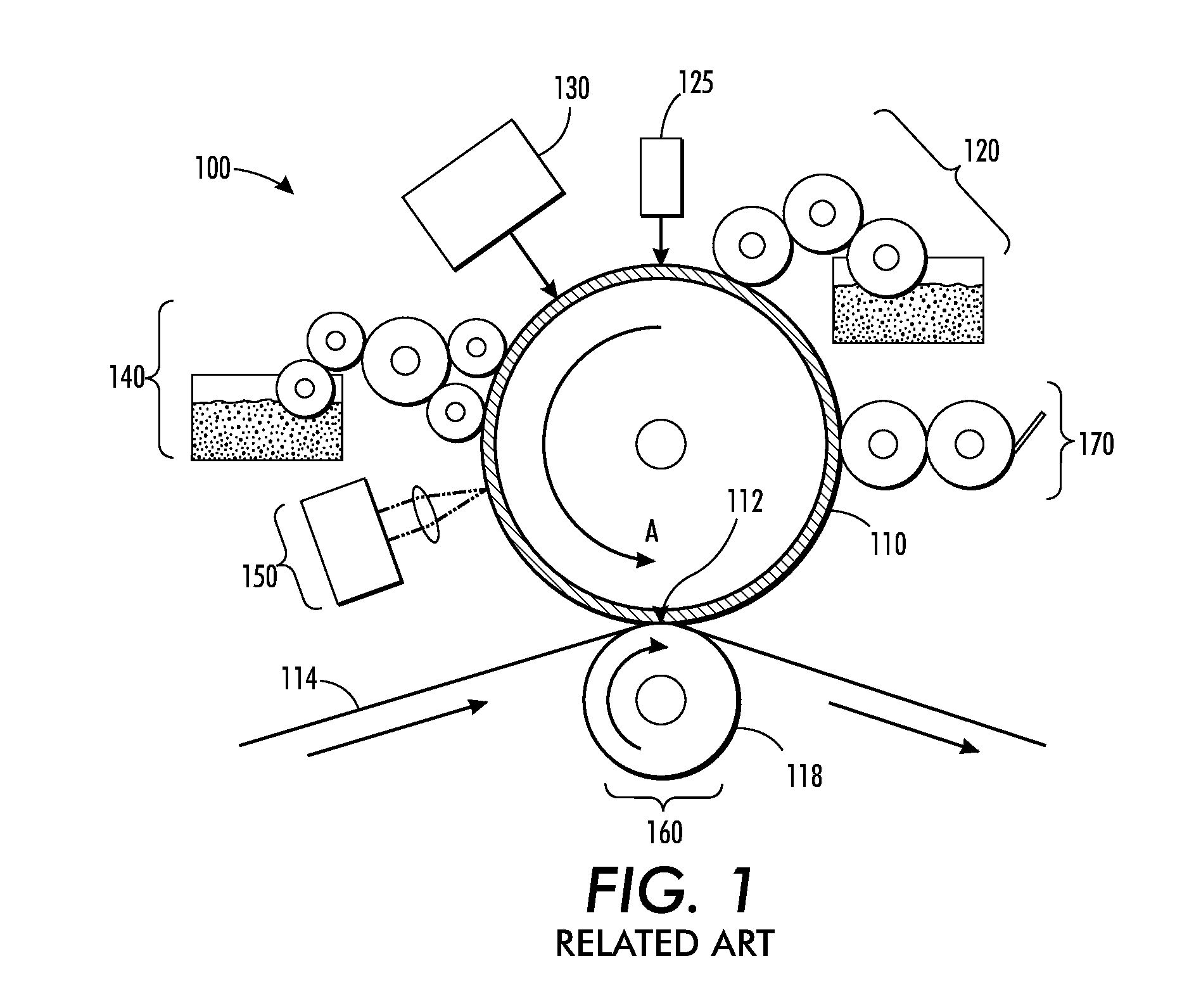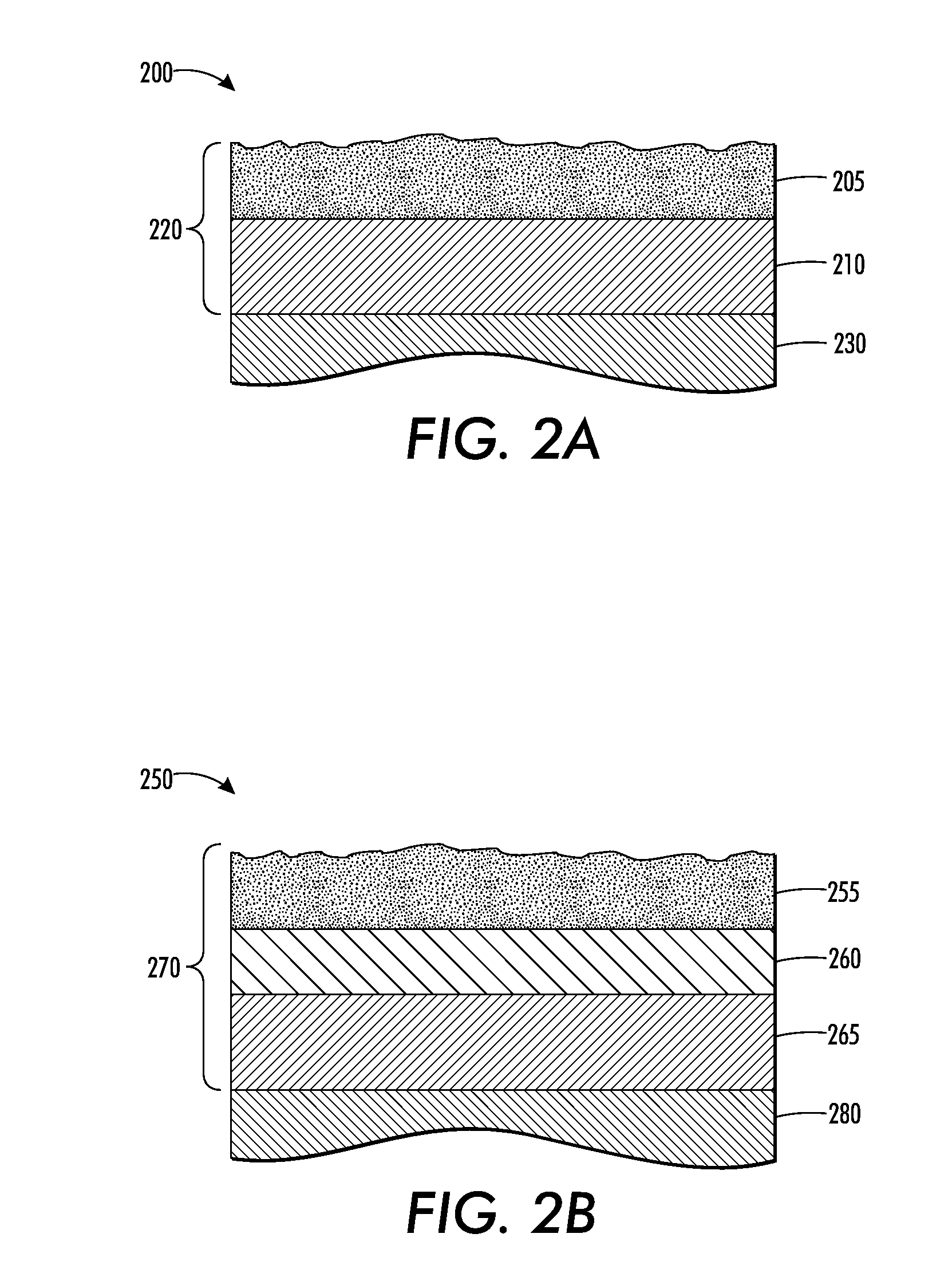Systems and methods for facilitating oil delivery in digital offset lithographic printing techniques
a technology of offset lithography and oil delivery, which is applied in the direction of lithography, wet duplicator, rotary lithographic machine, etc., can solve the problems of inability to accommodate true high-speed variable data printing process, inability to meet the needs of printing documents, and amortization of the cost of permanently-patterned imaging plates or cylinders over the number of documents produced, so as to improve the storage of releasing materials and improve the effect of thermal absorption of ligh
- Summary
- Abstract
- Description
- Claims
- Application Information
AI Technical Summary
Benefits of technology
Problems solved by technology
Method used
Image
Examples
Embodiment Construction
[0014]In order to address the above-identified shortfalls, U.S. patent application Ser. No. 13 / 095,714 (the 714 Application), which is commonly assigned and the disclosure of which is incorporated by reference herein in its entirety, proposes systems and methods for providing variable data lithographic and offset lithographic printing or image receiving medium marking The systems and methods disclosed in the 714 Application are directed to improvements on various aspects of previously-attempted variable data imaging lithographic marking concepts based on variable patterning of fountain solutions to achieve effective truly variable digital data lithographic printing.
[0015]According to the 714 Application, a reimageable surface is provided on an imaging member, which may be a drum, plate, belt or the like. The reimageable surface may be composed of, for example, a class of materials commonly referred to as silicones, including polydimethylsiloxane (PDMS) among others. The reimageable ...
PUM
 Login to View More
Login to View More Abstract
Description
Claims
Application Information
 Login to View More
Login to View More - R&D
- Intellectual Property
- Life Sciences
- Materials
- Tech Scout
- Unparalleled Data Quality
- Higher Quality Content
- 60% Fewer Hallucinations
Browse by: Latest US Patents, China's latest patents, Technical Efficacy Thesaurus, Application Domain, Technology Topic, Popular Technical Reports.
© 2025 PatSnap. All rights reserved.Legal|Privacy policy|Modern Slavery Act Transparency Statement|Sitemap|About US| Contact US: help@patsnap.com



